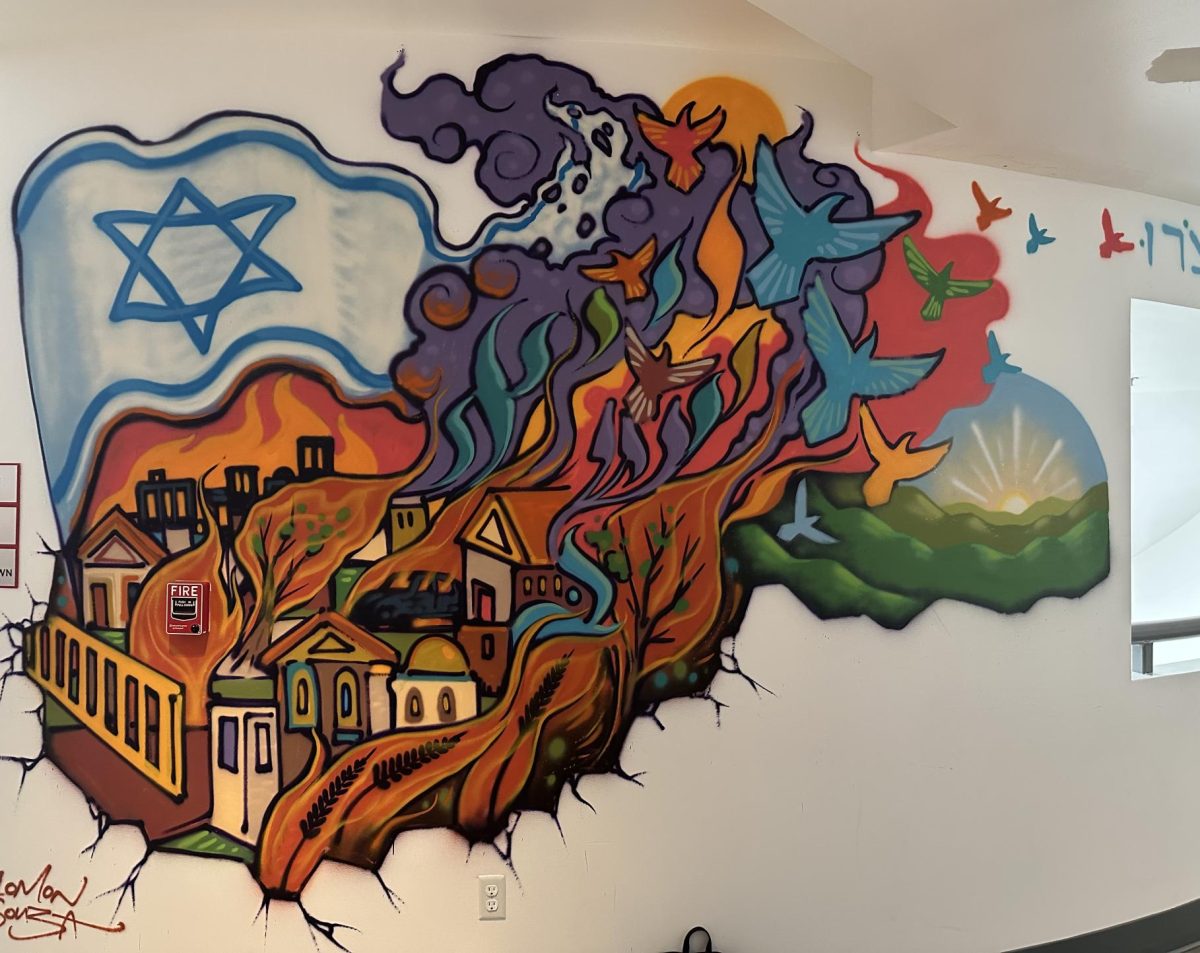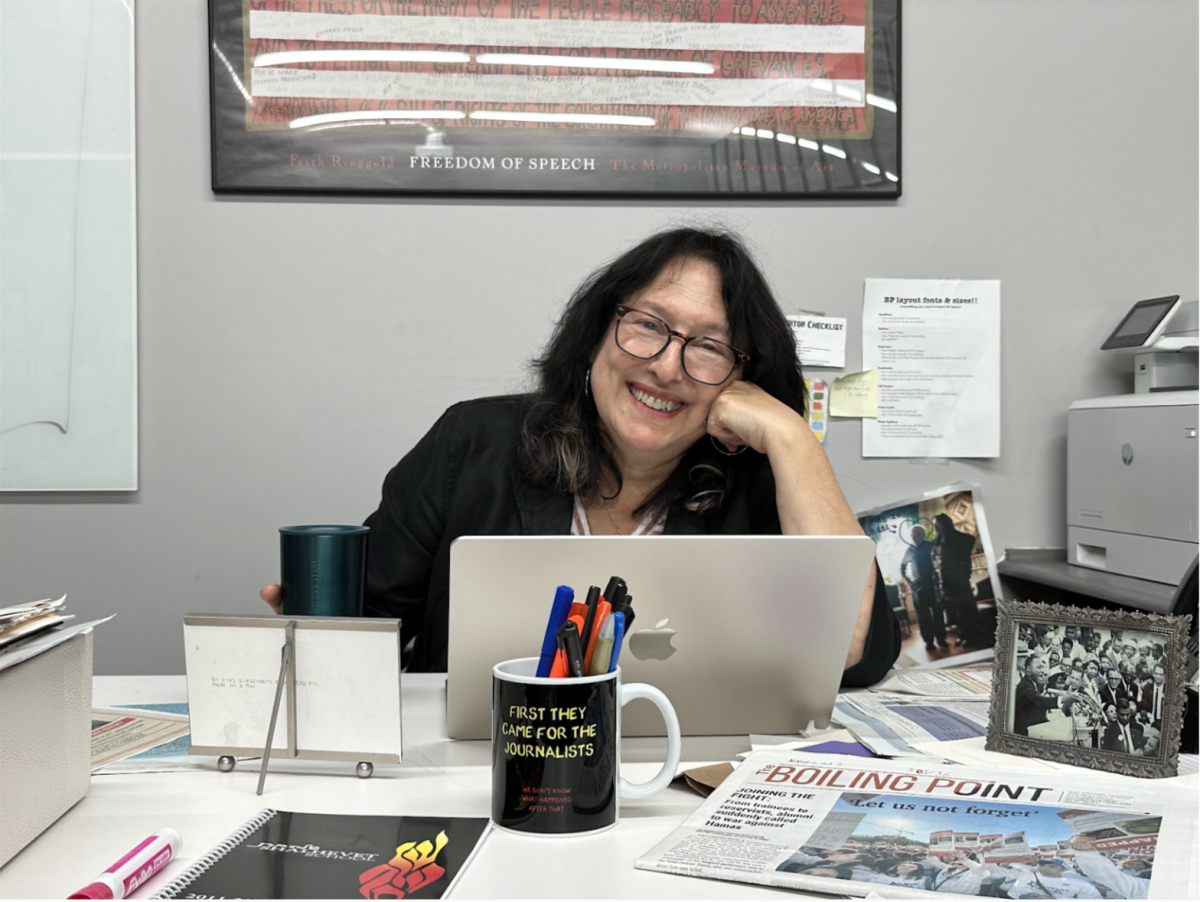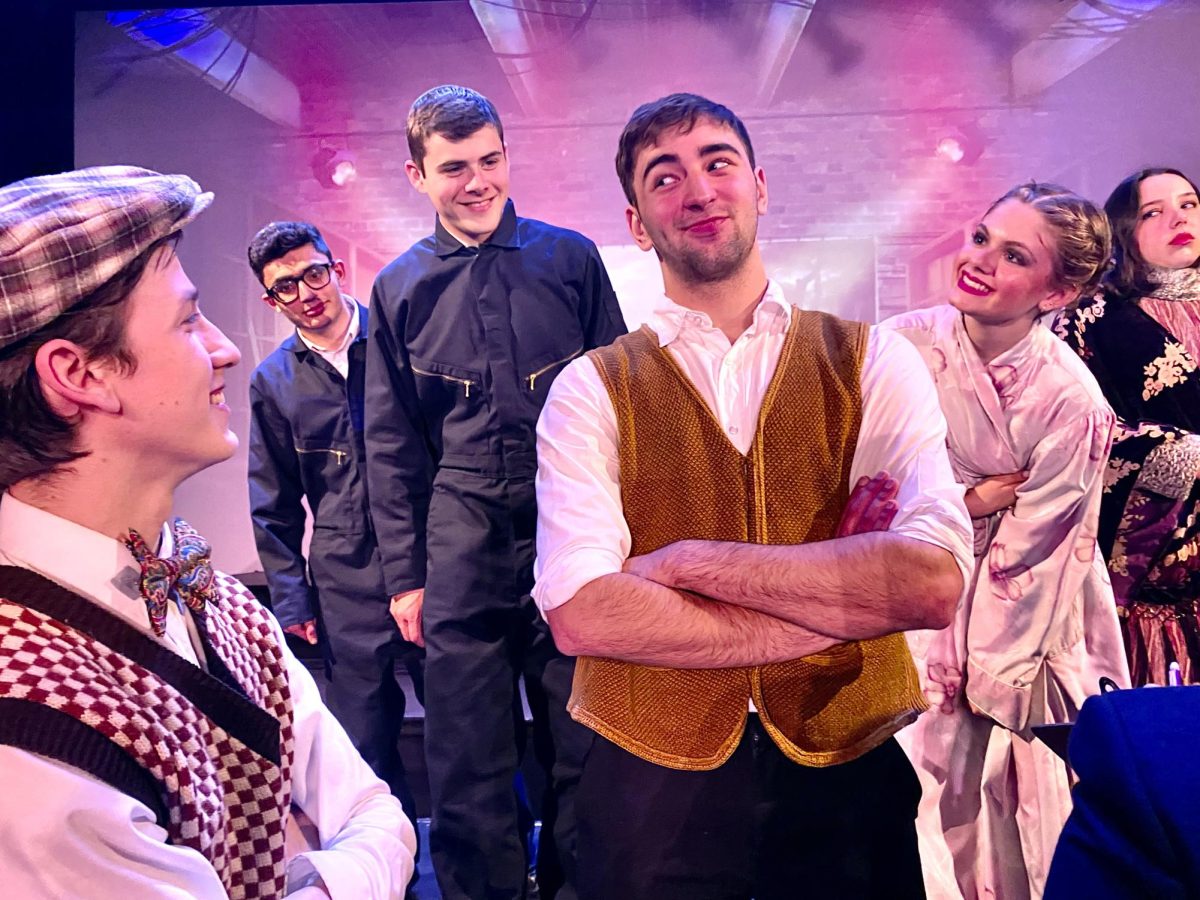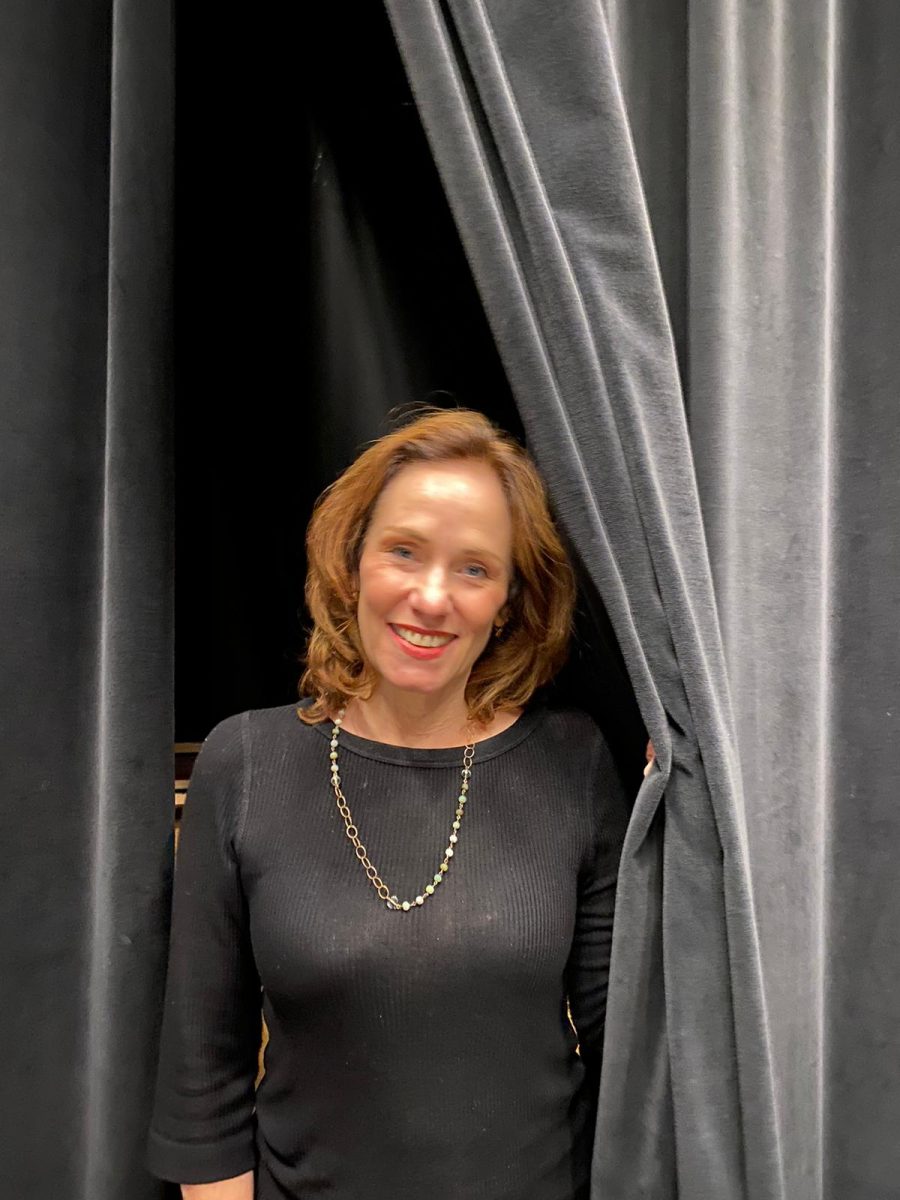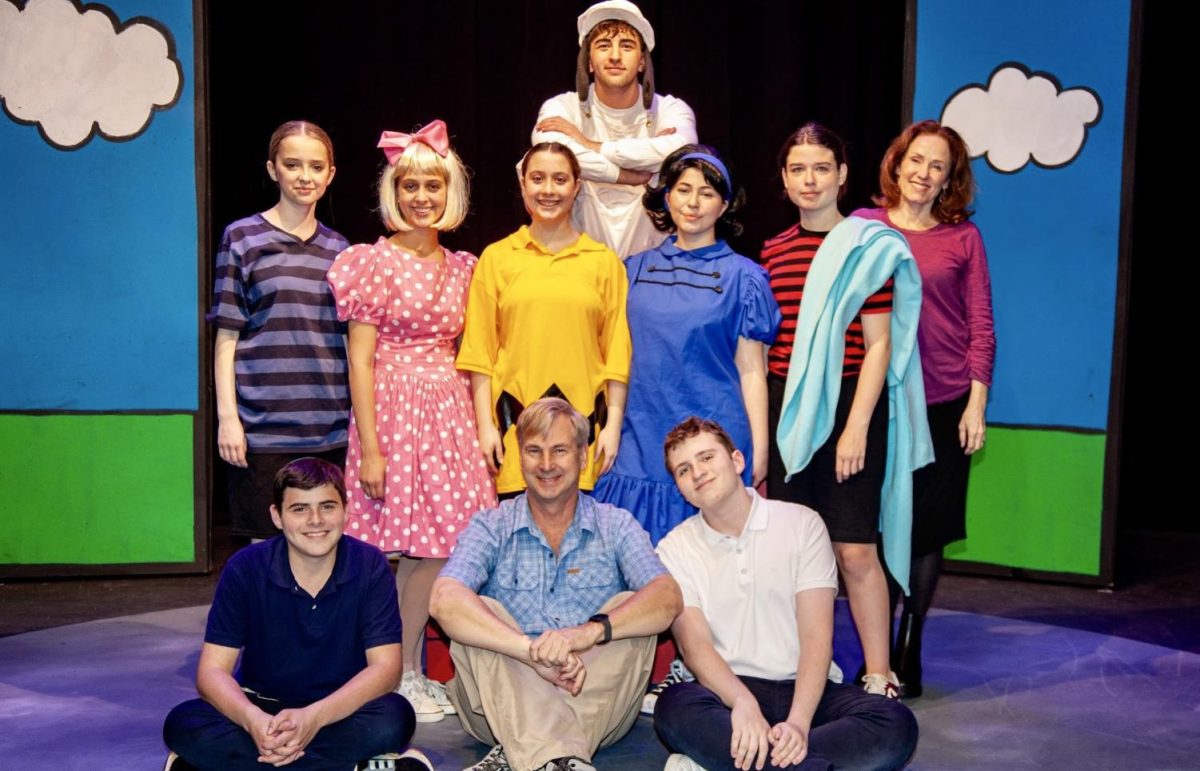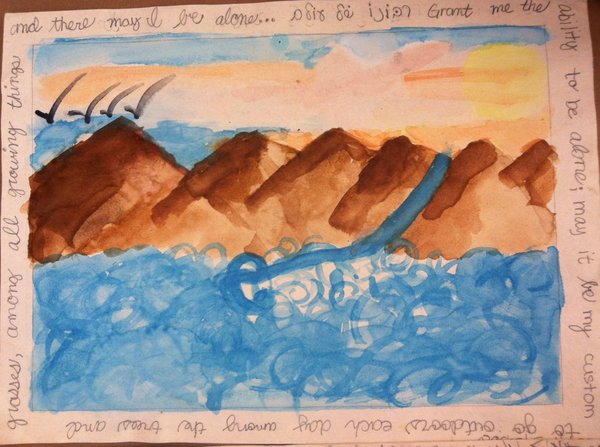
Each year during the first few weeks of 10th grade Composition and Design, art teacher Roen Salem holds up a painting of someone holding a gun to a head, or of a pile of garbage — hoping to achieve a shock effect that students will remember throughout the year.
The point, she says, is that the content of art matters. By showing these pictures, Roen hopes to teach students that the meaning of what they create is more important – at least to her – than their artistic ability or skill.
“There’s a responsibility of the students as Jews to make good art,” Roen said. “By good I don’t mean that they can or cannot draw well. Good art is art that comes from a good person with good values. We have a responsibility to, no matter what you do, reflect those good values and what we believe.”
And that is the underpinning for the Jewish content in Shalhevet’s art curriculum, whether in schoolwide Composition and Design, AP Studio Art, or Advanced Art, the newest honors class. Students should be obligated to remain conscious of their Judaism in their art content, Roen said, whether the content in specifically Jewish or not.
In taking this stand, Roen aligns herself with basic principles of the Torah – for example, the Second Commandment, which reads in part: You shall not make for yourself a graven image, nor any manner of likeness of any thing that is in heaven above, that is in the earth beneath, or that is in the water under the earth.
The context, tradition says – in between You shall have no other gods before Me and You shall not bow down to them nor serve them – makes clear that the real prohibition is against making idols for worship.
But while the Second Commandment does not actually forbid Jews from drawing likenesses of people, it does offer a clue that art, like everything else, is something Jews can learn about in the Torah.
This is exactly Roen’s view.
“Someone’s talent is God-given and he-she has to be grateful for it,” Roen said. “Art is a holy thing. I tell students that their hands are guided by Hashem.”
How is this expressed in Shalhevet’s art classes? Mostly in the assignments Roen gives, but sometimes in the way she coaxes students away from certain subjects.
Art students often paint or draw large-scale versions of photograph. Some have asked to draw nude photos. Roen allows them to, but says they won’t be displayed in the school.
“We have modesty in Judaism,” she said. “I understand the idea of having tzniut.”
More typically, though, Jewish assignments in the 10th-grade class emphasize spirituality or focus on Israel or prayers.
For one particular project she does each year, Roen turns off the lights in her room and tells students to close their eyes. She then says Rabbi Nachman of Bratslav’s famous prayer entitled “Master of the Universe, “ and tells students to imagine a beautiful meadow and sweet-smelling air and then draw whatever they imagine God to be.
Sophomore Ezra Guralnik painted a dark room with a single lit-up stool in the middle of the page.
Given the same assignment on the freshman retreat, ninth graders painted images of birds soaring over beautiful meadows of flowers, or a disarray of ocean waves crashing against mountains, representing God’s almighty power.
Other specifically Jewish projects include cutting out Jewish images and making a collage out of pictures of Jerusalem. Roen focuses on spirituality, telling students to draw a connection that they feel.
Senior Katie Feld, in her second year of AP art, said that she doesn’t necessarily agree with Roen’s notion that good art stems from the content matter.
“I believe strongly that as long as art speaks to the artist it’ll speak to the artist’s audience,” she said. “If the only way to get the art to speak to you is through shock, then that’s the type of art it’s going to be.”
Katie’s art features a collection of landscapes, portraits, and retro paintings. Roen agrees that artwork needs to capture the audience’s attention, but rather than using “shock-factor” as a means of grabbing attention, Roen prefers her students think unconventionally when it comes to their art and design their artwork in an eye-catching and original way.
“My goal is for my students to consult their inner being and express themselves using good Judaic values, which is a balance they won’t get elsewhere” said Roen. There’s a certain maturity level when the artist can defend the shock value, but in high school, when they are young adults, I want to instill these morals into them.”
Of course, such conflict is not new, either to Judaism or to art. There have always been debates over whether art should be beautiful, or express only happy things. Michelangelo was criticized for painting and sculpting Biblical figures in the nude, and even the U.S. Congress has gotten into the debate over whether art should inspire humanity or just reflect life the way it really is.
Roen enjoys an eclectic range of art- abstract art being her favorite. She herself creates ketubot, Jewish prenuptial agreements, that are works of art, and also paints a lot of artwork related to Judaism for the staff at Shalhevet.
“I love using Hebrew text,” she said. “I drew a panel of alephs for Rabbi Segal, and even though a few of the alephs I painted were backwards, it still looked pretty cool!”
She also drew a portrait of the Biblical red heifer and painted quotes from the Torah around it, saying that she made the painting abstract.
Sophomore Shana Chriki said she likes Roen’s approach.
“She recently made us do an assignment on how we think we can keep the memory of the Holocaust alive,” Shana said. “I think the Jewish ideas she incorporates in class really help me feel connected and inspired. When I drew my picture I really thought about the deeper meaning of the Holocaust — I felt like it meant something to me.”
Roen says that students don’t always like the spiritual assignments, however.
“Students feel that they get enough religious education in regular classes so when they come to art, they don’t want to associate their artwork with anything religious,” she said.
Junior Yan Kligerman is an example.
“Personally, I like doing my own drawings in art class,” said Yan. “I guess you can express your love of Judaism through art, but I don’t think that Jewish art conveys a huge message or set of values.”
Others see Roen’s assignments as important, even though they hope to go beyond them some day – whether or not they agree that art should be moral.
Sophomore Jillian Einalhori said she doesn’t necessarily agree with the reason Roen shows the pictures to shock students in the beginning of the year.
“I don’t think showing us a couple of pictures will scare us into remaining true to our values,” Jillian said, “I don’t think the values show through art. I think anything can be good art to anyone, and it doesn’t need a moral subject.”
But she still thinks Jewish assignments are a good idea for Shalhevet students – even if they should, and do, create other kinds of art on their own.
“We do go to a Jewish school, so it makes sense,” said Jillian. “Art doesn’t need to always connect with Judaism, but I think maintaining Judaism in any class is important.”
Arts Editor Hannah-Leeba Ellenhorn and Features Editor Alexa Fishman contributed to this story.

